
Albert Einstein was a German-born theoretical physicist who is best known for developing the theory of relativity. Einstein also made important contributions to quantum mechanics. His mass–energy equivalence formula E = mc2, which arises from special relativity, has been called "the world's most famous equation". He received the 1921 Nobel Prize in Physics for his services to theoretical physics, and especially for his discovery of the law of the photoelectric effect
.

In physics, gravity (from Latin gravitas 'weight') is a fundamental interaction primarily observed as mutual attraction between all things that have mass. Gravity is, by far, the weakest of the four fundamental interactions, approximately 1038 times weaker than the strong interaction, 1036 times weaker than the electromagnetic force and 1029 times weaker than the weak interaction. As a result, it has no significant influence at the level of subatomic particles. However, gravity is the most significant interaction between objects at the macroscopic scale, and it determines the motion of planets, stars, galaxies, and even light.

Sir Joseph Rotblat was a Polish and British physicist. During World War II he worked on Tube Alloys and the Manhattan Project, but left the Los Alamos Laboratory on grounds of conscience after it became clear to him in 1944 that Germany had ceased development of an atomic bomb.
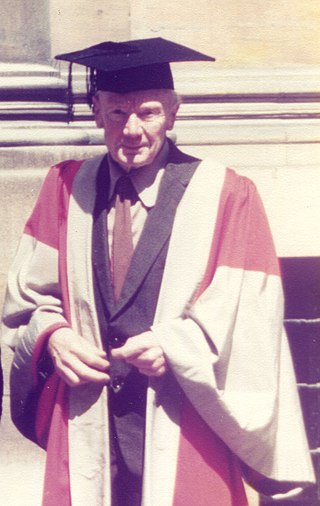
Edmund ("Ted") John Bowen FRS was a British physical chemist.

John R. Gribbin is a British science writer, an astrophysicist, and a visiting fellow in astronomy at the University of Sussex. His writings include quantum physics, human evolution, climate change, global warming, the origins of the universe, and biographies of famous scientists. He also writes science fiction.

William Andrew Coulthard Robinson is a British author and former newspaper editor.

Jameel Sadik "Jim" Al-Khalili is an Iraqi-British theoretical physicist and science populariser. He is professor of theoretical physics and chair in the public engagement in science at the University of Surrey. He is a regular broadcaster and presenter of science programmes on BBC radio and television, and a frequent commentator about science in other British media.
David Bodanis is an American speaker, business advisor and writer of bestselling nonfiction books, notably E=mc2: A Biography of the World's Most Famous Equation, which was translated into 26 languages. Originally from Chicago, he received an undergraduate education in mathematics, physics and economics at the University of Chicago. He lived in France for ten years from his early twenties and has since been based in London.

The Evolution of Physics: The Growth of Ideas from Early Concepts to Relativity and Quanta is a science book for the lay reader. Written by the physicists Albert Einstein and Leopold Infeld, it traces the development of ideas in physics. It was originally published in 1938 by Cambridge University Press. It was a popular success, and was featured in a Time cover story.

Chad Orzel is a professor of physics and science author, noted for his books How to Teach Quantum Physics to Your Dog, which has been translated into 9 languages, and How to Teach Relativity to Your Dog. Chad as a science communicator is a regular contributor on Forbes.com, on his personal website, and, through October 2017, on ScienceBlogs.com, while continuing his work as an associate professor at Union College.

Roger Ronald Highfield is an author, science journalist, broadcaster and Science Director at the Science Museum Group.
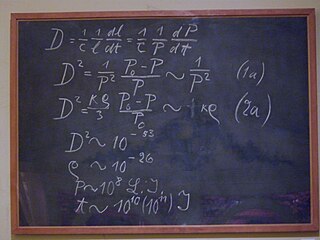
Einstein's Blackboard is a blackboard which physicist Albert Einstein (1879–1955) used on 16 May 1931 during his lectures while visiting the University of Oxford in England. The blackboard is in the collection of the History of Science Museum in Oxford. The equations in the blackboard are related to the cosmological model known as Friedmann–Einstein universe.
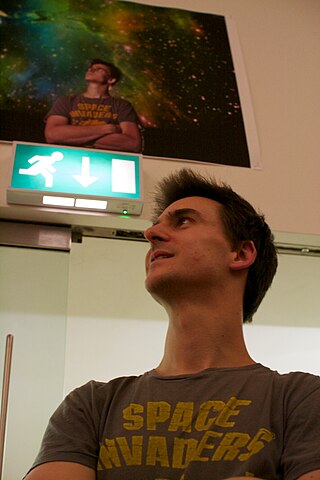
Lewis Ryan Dartnell is a British astrobiologist, presenter, and professor of science communication at the University of Westminster. His works of popular science include The Knowledge: How to Rebuild our World from Scratch and Origins, which looks at how geology has impacted human history.
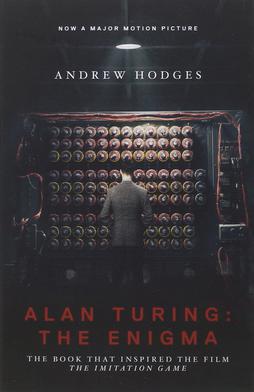
Alan Turing: The Enigma (1983) is a biography of the British mathematician, codebreaker, and early computer scientist, Alan Turing (1912–1954) by Andrew Hodges. The book covers Alan Turing's life and work. The 2014 film The Imitation Game is loosely based on the book, with dramatization.

Einstein: His Life and Universe is a non-fiction book authored by American historian and journalist Walter Isaacson. The biographical analysis of Albert Einstein's life and legacy was published by Simon & Schuster in 2007, and it has received a generally positive critical reception from multiple fronts, praise appearing from an official Amazon.com review as well as in publications such as The Guardian and Physics Today.

The Last Man Who Knew Everything (2006), written by Andrew Robinson, is a biography of the British polymath Thomas Young (1773–1829).

The Scientists: An Epic of Discovery (2012), edited by Andrew Robinson, is a collection of 43 biographies of a selection of the greatest scientists of all time. An updated paperback edition of the book entitled The Scientists: Pioneers of Discovery appeared in 2023.

Subtle is the Lord: The Science and the Life of Albert Einstein is a biography of Albert Einstein written by Abraham Pais. First published in 1982 by Oxford University Press, the book is one of the most acclaimed biographies of the scientist. This was not the first popular biography of Einstein, but it was the first to focus on his scientific research as opposed to his life as a popular figure. Pais, renowned for his work in theoretical particle physics, was a friend of Einstein's at the Institute for Advanced Study in his early career. Originally published in English in the United States and the United Kingdom, the book has translations in over a dozen languages. Pais later released a sequel to the book in 1994 titled Einstein Lived Here and, after his death in 2000, the University Press released a posthumous reprint of the biography in 2005, with a new foreword by Roger Penrose. Considered very popular for a science book, the biography sold tens of thousands of copies of both paperback and hardcover versions in its first year. The book has received many reviews and, the year after its initial publication, it won both the 1983 National Book Award for Nonfiction, in Science (Hardcover), and the 1983 Science Writing Award.
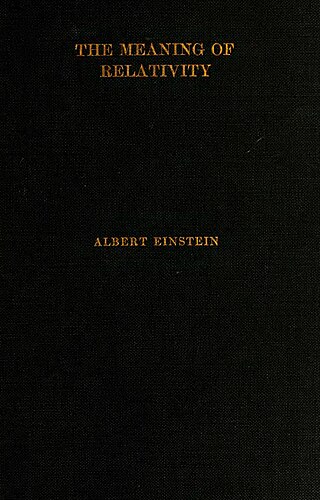
The Meaning of Relativity: Four Lectures Delivered at Princeton University, May 1921 is a book published by Princeton University Press in 1922 that compiled the 1921 Stafford Little Lectures at Princeton University, given by Albert Einstein. The lectures were translated into English by Edwin Plimpton Adams. The lectures and the subsequent book were Einstein's last attempt to provide a comprehensive overview of his theory of relativity and is his only book that provides an accessible overview of the physics and mathematics of general relativity. Einstein explained his goal in the preface of the book's German edition by stating he "wanted to summarize the principal thoughts and mathematical methods of relativity theory" and that his "principal aim was to let the fundamentals in the entire train of thought of the theory emerge clearly". Among other reviews, the lectures were the subject of the 2017 book The Formative Years of Relativity: The History and Meaning of Einstein's Princeton Lectures by Hanoch Gutfreund and Jürgen Renn.

Einstein in Oxford (2024), by Andrew Robinson, is a biographical account of Albert Einstein's association with the city of Oxford, especially the University of Oxford, particularly in the areas of science, music, and politics. It was published by Bodleian Library Publishing.




















